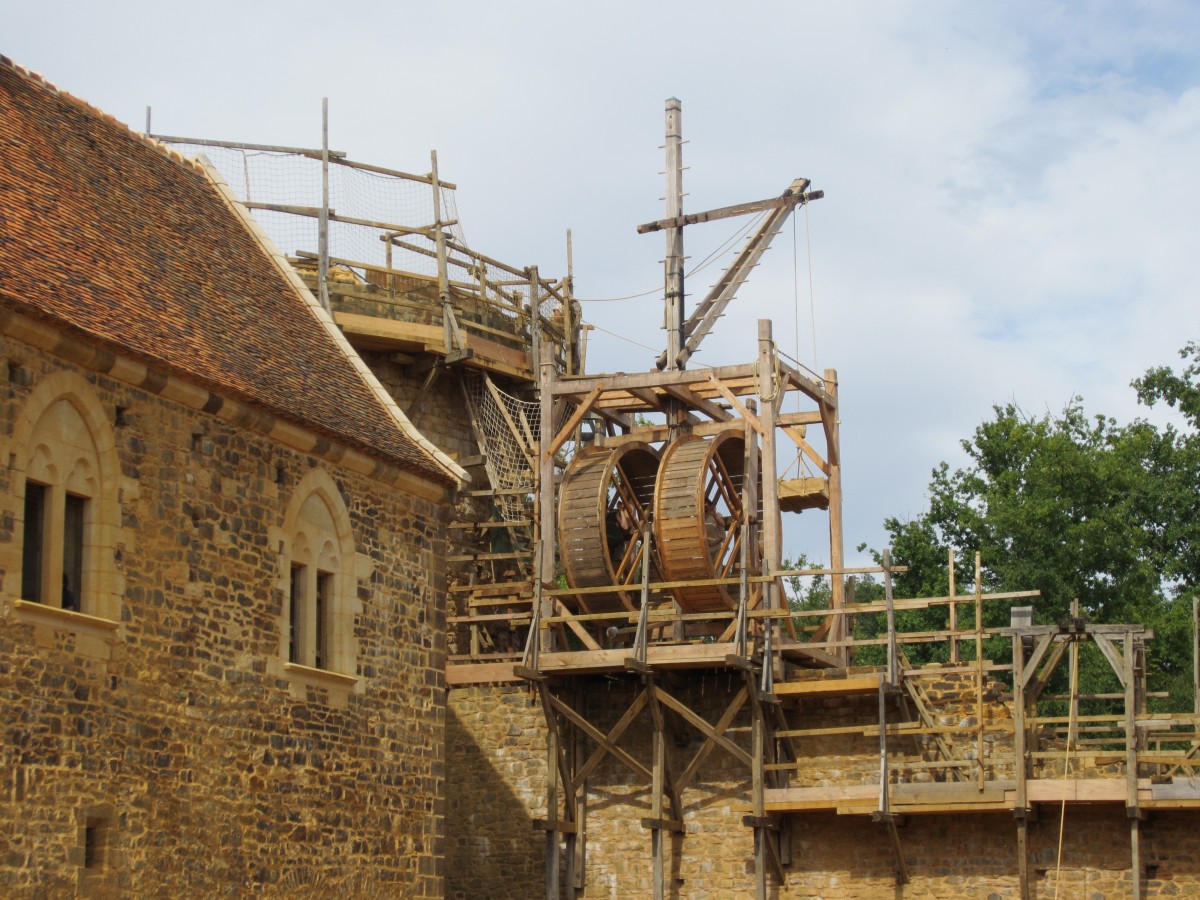Since everyone is talking about Pathfinder 2nd Edition playtest, lets take a moment to look at it from a game writing perspective. When PF2 releases, assuming that it’s similar to it’s current form, how will that change the way we write adventures for it? The key differences are: the action economy, significantly fewer Attacks of Opportunity, mobile combats, reactions, hazards, tighter math, streamlined monster creation. Let’s take a look at each element.
Action Economy
 With 3 actions per round instead of 2, this changes the capabilities of the creatures in our encounters. Essentially (almost) everything in PF2 has Spring Attack because it can spend an action to Stride (move), another to Strike (attack), and the final action to Stride again. This makes skirmishing foes like kobolds and goblins a bit more tricky to fight. It also means that “slow” creatures like golems and giants will likely have activities that cost them more than one action, such as a big powerful attacks like the cyclops’s Swipe and a fire giant’s Flaming Strike. Use this information to your advantage when trying to establish the pacing of a particular encounter.
With 3 actions per round instead of 2, this changes the capabilities of the creatures in our encounters. Essentially (almost) everything in PF2 has Spring Attack because it can spend an action to Stride (move), another to Strike (attack), and the final action to Stride again. This makes skirmishing foes like kobolds and goblins a bit more tricky to fight. It also means that “slow” creatures like golems and giants will likely have activities that cost them more than one action, such as a big powerful attacks like the cyclops’s Swipe and a fire giant’s Flaming Strike. Use this information to your advantage when trying to establish the pacing of a particular encounter.
Attacks of Opportunity
Now that only fighters get the attack of opportunity reaction and few other classes have access to this option, movement will be much more free for all combatants. I see spell casters running past foes to get them in the perfect 15 foot cone and martial classes looking for pinch-points they can use to block off a foe’s advancement towards the back line. There’s no reason for an intelligent creature to beat on the high AC paladin who’s up front if they can move past them and get to the squishy spell casters in the back. For this reason, consider putting features in the terrain that allow the PCs (and their foes) to work tactically, creating pinch points and blocking their more vulnerable allies. You can no longer rely in the threat of attacks of opportunity to keep rogues and monks from running past your front line and into your vulnerable archers. Use the terrain!
Mobile Combats
 As mentioned above, the lack of AoOs has created a very mobile battlefield. Try and use that to your advantage when creating encounter spaces. Maps should have options for the combatants to gain advantages through higher ground, risky short cuts, and various options for cover. Spread your foes out and let them use this mobile battlefield to their advantage. If you have an idea about how a creature might move around and use the terrain, make sure to include it in your tactics section.
As mentioned above, the lack of AoOs has created a very mobile battlefield. Try and use that to your advantage when creating encounter spaces. Maps should have options for the combatants to gain advantages through higher ground, risky short cuts, and various options for cover. Spread your foes out and let them use this mobile battlefield to their advantage. If you have an idea about how a creature might move around and use the terrain, make sure to include it in your tactics section.
Reactions
The flavor and flexibility added by reactions is amazing. By introducing the reactions mechanic to the game, you can now assign a special reaction to all creatures in a given encounter. If the goblins have tapped into some well of evil power, they might be able to use a reaction to blast a foe with dark magic when they’re attacked. A kobold can ready an action to pull a lever and open a pit trap, then use their reaction to drop one or more PCs into the pit when they step into the wrong square. A kobold trap expert might have the ability to trigger any trap in the room with a reaction. Feel free to add encounter specific reactions to your creatures to take advantage of this great new mechanic.
Hazards
Right now, hazards include traps, haunts, and environmental effects. They’re a little bit complicated for my tastes, but I can appreciate trying to combine these mechanically similar things into one big category. One of the great things they added was the ability to deal direct damage to a non-magical trap to “disarm” it, and hazards have an initiative so they can act in rounds more seamlessly. Essentially, you can now easily set up some sort of terrain effect and give it a hit point total and an initiative. This makes it easier than ever to incorporate interesting effects into your encounters during a combat instead of just outside of combat. What sorts of encounters does this make you think of, now that your lava spout or repeating crossbow trap has a place in initiative?
Tighter Math
The biggest change that effects the system is the tight math. Previously, you could put a powerful creature in an encounter to really give the PCs a challenge. Now, with the tight math, a creature who’s CR is 3 higher than the party’s level has a huge advantage. They’ll be getting critical hits on the PCs right and left, where the PCs are going to have trouble even getting a successful attack in. This is because they’ll essentially have an AC 3 points higher and bonus to hit that’s 3 points higher, creating a 15% swing on both attacking and defending. Because critical hits work on meeting the target’s AC+10, there’s also a 15% better chance to critically hit the PCs and a -15% chance for the PCs to critically hit. Beware of this strategy and use it with caution.
Challenges with a level plus or minus 1 from your PCs level is going to be your best bet. That only moves the math 5% in either direction, giving you fairly even results. The unfortunate part is how restrictive that makes monster selection, but Paizo has a solution for that as well…
Streamlined Monster Creation
 Though this isn’t a monster-building blog, custom monsters and stat-blocks are part of writing an adventure. In Pathfinder 1st Edition, a custom monster means hours of work to balance out the monster’s ability scores and feat selection with the target numbers for AC, attack rolls, damage rolls, saves, and spell DCs. Now you can just use a template to get the numbers that are in the right ballpark and make the math work, make a few tweaks (such as raising the AC by 1 or 2 and lowering the TAC by 1 or 2 for a slow but well armored foe), add a few special abilities, and finally give it a couple interesting actions and a thematic reaction. You’ve now got a monster that’s perfect for your encounter in about 20 minutes instead of 1 or 2 hours.
Though this isn’t a monster-building blog, custom monsters and stat-blocks are part of writing an adventure. In Pathfinder 1st Edition, a custom monster means hours of work to balance out the monster’s ability scores and feat selection with the target numbers for AC, attack rolls, damage rolls, saves, and spell DCs. Now you can just use a template to get the numbers that are in the right ballpark and make the math work, make a few tweaks (such as raising the AC by 1 or 2 and lowering the TAC by 1 or 2 for a slow but well armored foe), add a few special abilities, and finally give it a couple interesting actions and a thematic reaction. You’ve now got a monster that’s perfect for your encounter in about 20 minutes instead of 1 or 2 hours.
This goes especially for NPC stat blocks, as they’re no longer built in the same way as PCs. Even if in your head an NPC is a fighter, you can just give them the attack of opportunity reaction if you feel they need it. If you also want to give them a divine spell because they’re a zealot for their dark god, then do it! You don’t need the PC rules to dictate how your NPC works. You’re free to create them with the flavor and capabilities that you need.
Overall, this edition has put a lot of good tools in the adventure writer’s hands. I’m looking forward to getting down and dirty and working with them next fall, but for now I’ll have to hone my skills with home games.






